What Is the Future of Luxury?
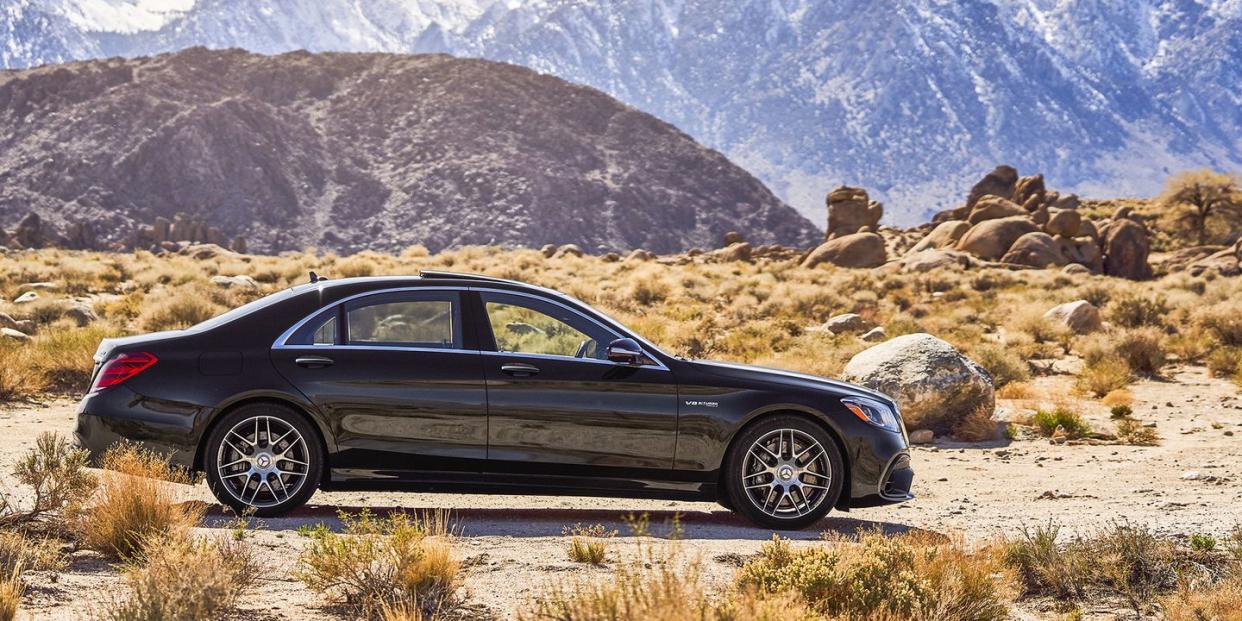
WHEN IT COMES TO LUXURY CARS, we are all Supreme Court Justice Potter Stewart. In determining whether Louis Malle’s film Les Amants was legally obscene, he gave us an expression for the ages: “I shall not today attempt further to define [pornography]. ...But I know it when I see it.”The same holds true for the idea of a luxury car: The concept seems obvious, but the details can be hard to pin down.
What defines “luxury”? Features? Cost? Exclusivity?
In some places, the mere possession of a private automobile is considered a luxury; elsewhere, valets are parking Flying Spurs in the back lot to make room for Phantoms up front. How about the “car” part? Nowadays, a full-size luxury vehicle is twice as likely to be an SUV as a traditional sedan, according to IHS Markit. So if we still think we know a “luxury car” when we see one, it might be time to get our vision checked.
To do just that, we selected three very different ways to spend six figures and released them in their natural habitat of Pasadena, California. First up: the Lexus LS 500, freshly reimagined as an unashamedly Japanese take on the premium sedan. It no longer relies on price and durability to lure buyers from the Europeans. Next up, Lincoln’s all-new Navigator Black Label takes the luxury SUV to dizzying and remarkably self-indulgent heights. Last but not least, is the Mercedes-Benz S-Class. No other vehicle better exemplifies the luxury car in its traditional form. After more than five decades, the S-Class remains peerless, not so much primus inter pares as Tyrannosaurus rex. As with a Rolex Daytona or a Hermès Birkin bag, the desirability of the object itself transcends trend or fashion.
This is not a head-to-head comparison: The Navigator can’t catch the Lexus on a fast road, nor can the S63 tow an Airstream. We don’t expect the Lincoln to herald the obsolescence of the S-Class as the archetypical luxury car. On the contrary, the S-Class will likely retain a certain eminence all the way to the demise of the personally owned automobile. In the uncertain times between now and then, however, a change is gonna come.
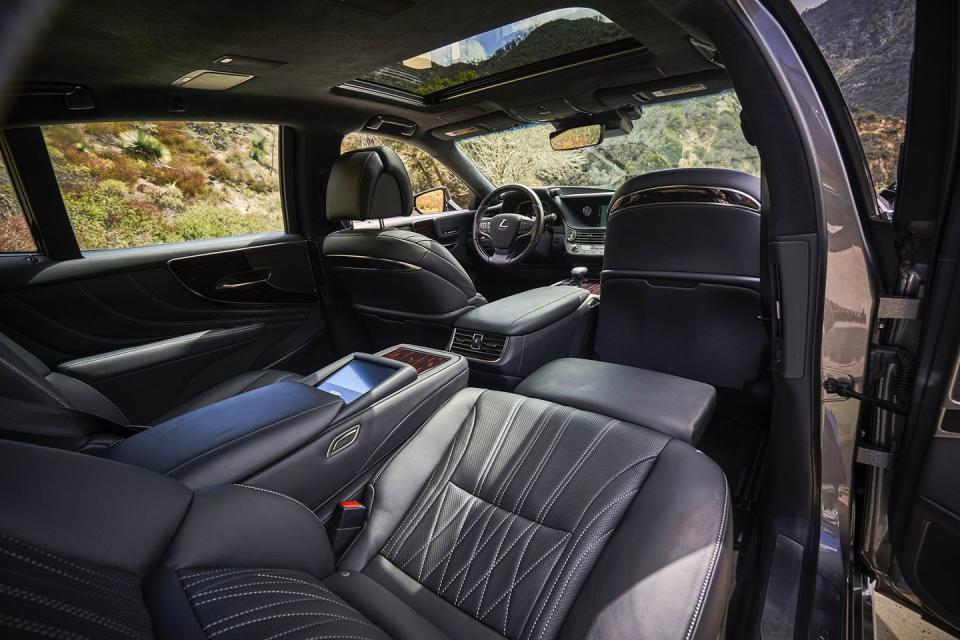
Luxury Realigned
THE APPEAL OF THE FIRST LEXUS LS 400 was more or less the same reason people see a Guns N’ Roses tribute band: From a distance, it looks like the real thing, and you are less worried about breakdowns. Its successor, the LS 430, aped the bland Boeing-esque massiveness of the 1990s W140 S-class. The fourth-generation LS 460 owed much of its contouring and profile to the 2000–2006 W220.
In that context, the spindle grille and eight-window, NASCAR-raked profile of the LS 500 can be seen for what they truly are: a declaration of independence. There was a time when it was profitable for a Lexus to resemble a Mercedes, but the prestige of Toyota’s luxury brand is now so strong that the most profitable thing for a Lexus to resemble is, in fact, another Lexus.
This realignment also reflects a reality that Toyota might be less eager to trumpet. In 1990, the LS 400 was the core product and the best-selling model at Lexus dealers, but in 2017, the LS 460 accounted for just under one and a half percent of the brand’s total volume in the U.S., outsold by every vehicle in the lineup.
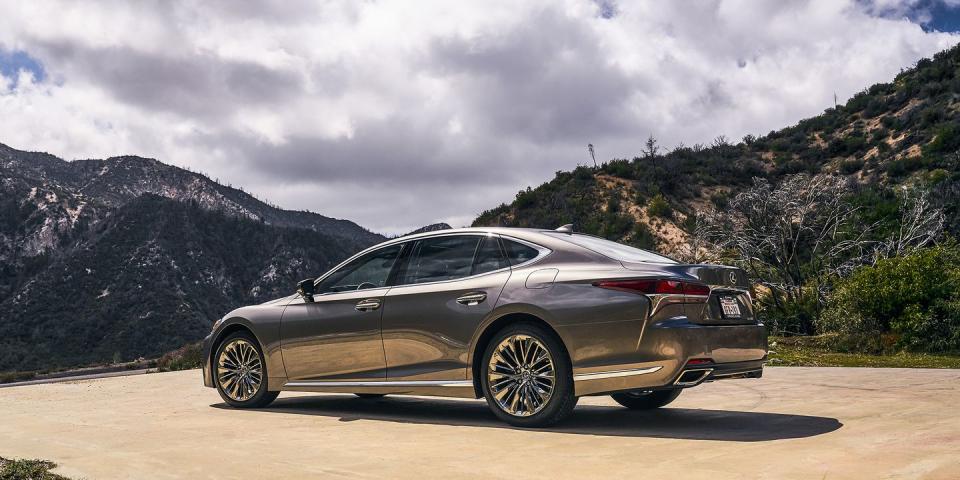
Yet Lexus has extracted an ornament from an inconvenience. Shorn of the responsibility to hold up a balance sheet, the LS 500 is free to serve as a branding talisman, a corporate mission statement rendered in sinuous metal. This is apparent from the moment you open the remarkably light door and take a seat behind the wheel. Its predecessor featured a forest of wood trim, but the new car cuts that down to a few decorative panels and a presence on the steering wheel. Where the timber used to be, we have Great Wave–styled, contrast-stitched leather. The two-tone metal bands of the center-console vents evoke high-end Japanese stereo products from the Eighties. The climate-control panel reinforces that theme and offers a minor, but supremely satisfying, refinement: The desired temperature is shown on a small, high-resolution black-and-white LCD display, and when you change the setting, the digits perform a rolling animation.
They say it never rains in Southern California, but as we point the LS 500 out of La Cañada Flintridge and up into the mountains of the Angeles Crest Highway, a downpour is creating pools of water at every apex. The Lexus is untroubled. The twin-turbo V-6 applies its 416 hp through the rear 20-inch summer tires and effortlessly rockets up the short segments between turns. With the drive mode set to Sport S+, body roll dwindles to a communicative minimum and the transmission swaps gears with aggressive clunks. The experience will be familiar to anybody who has driven the Lexus IS 350 F Sport.
As will the packaging. The LS 500 is just an inch or two smaller in most dimensions than the S-Class, but in contrast to that car’s airy, spacious cockpit, the Lexus’s interior is intimate verging on cramped, with headroom barely sufficient for a six-foot-two driver. Call it a child of a lesser god, or perhaps just more faithful to the packaging of the old 560SEL. The difference is further reflected in the instrument panel, where the horizontal sweep of the S63’s full-LCD combination dashboard and infotainment module is replaced in the LS by a modest screen set deep within a leather bezel resembling a Wolf valet tray. Second-row accommodations are tight. There is a power-folding ottoman for the VIP sitting in the right rear, but using it renders the seat ahead nonfunctional.
On the twisting path to the Mount Wilson Observatory, the LS 500 confirms its excellence as a driver’s car, never experiencing brake fade and permitting a small but gratifying amount of sideways attitude before the stability system clamps down gently but firmly.
The rest of the car is traditional Lexus, for better and worse. It can be eerily quiet; more than once we mistook the well-insulated engine at idle for an auto-stop system. The cabin can mimic a concert hall, although the Mark Levinson–branded stereo is not up to the standards set by the Revel Ultima system in the Navigator. While the LS’s combination volume-and-track-selection knob is a work of functional art and should be standard in every car, accessing other features requires a tiresome slog through the center-console menu.
The transition from cover band to concert headliner suits the LS. Rightly renowned since its birth for being durable, it can now also be characterized as desirable.
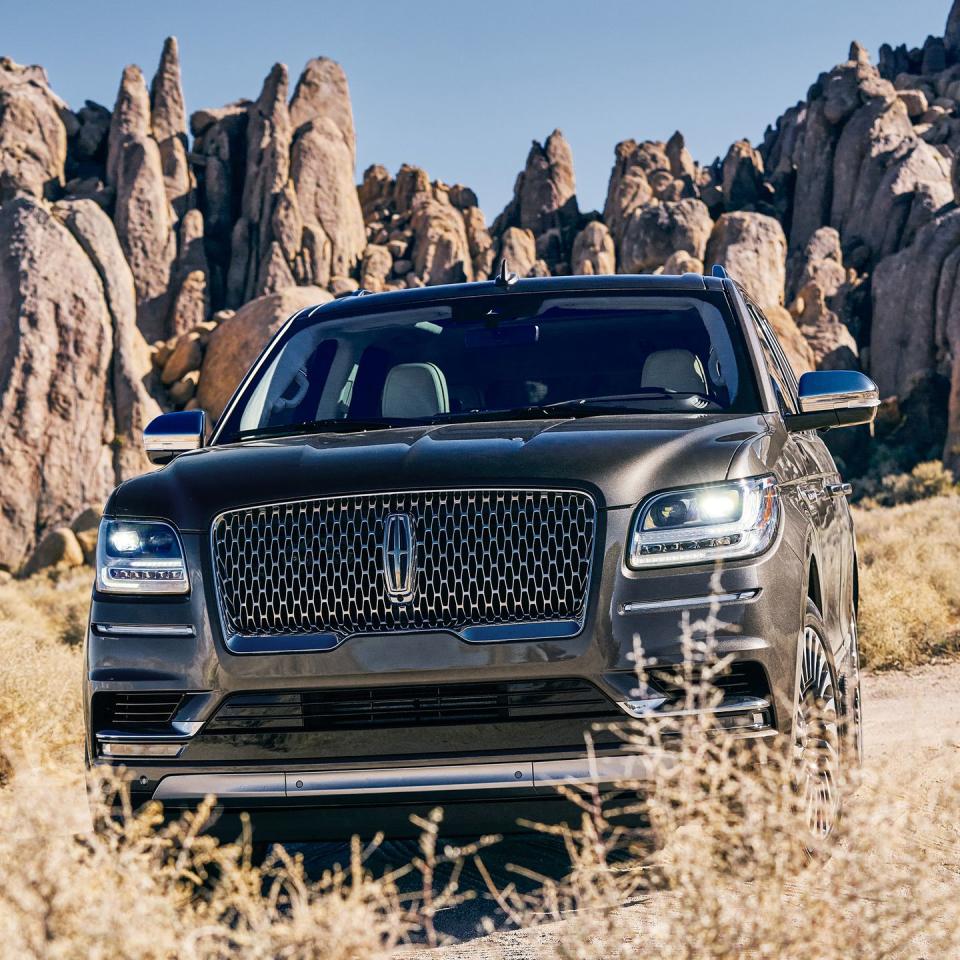
New Shape of Sophistication
IN 1973, REAL ESTATE BROKER ROBERT J. RINGER published a book in which he asserts, “Every person has the inherent right to ‘self-proclaim’-to announce, at any time he chooses, that he is on any level he chooses to be on.” But self-proclaiming only works, he adds, if you can back it up by performing at that level.
Consider the $100,315 sticker price of our Lincoln Navigator Black Label an example of self-proclaiming. The original 1998 Navigator, basically an F-150 with a cap on the back, would have been a bad joke at this price. Its replacement, which persisted from 2003 to 2017 through a series of shambolic face-lifts, was mechanically competent but short on curb appeal. Nothing in the Navigator’s history suggests it has the heritage or prestige to compete with six-figure sedans.
Casual observers are forgiven their skepticism. This latest effort is not particularly handsome from any angle, even in the added-cost and very vintage Chroma Molten Gold of our test vehicle. You might dismiss it as a plated-plastic “luxury” front end tacked onto yet another full-sized SUV.
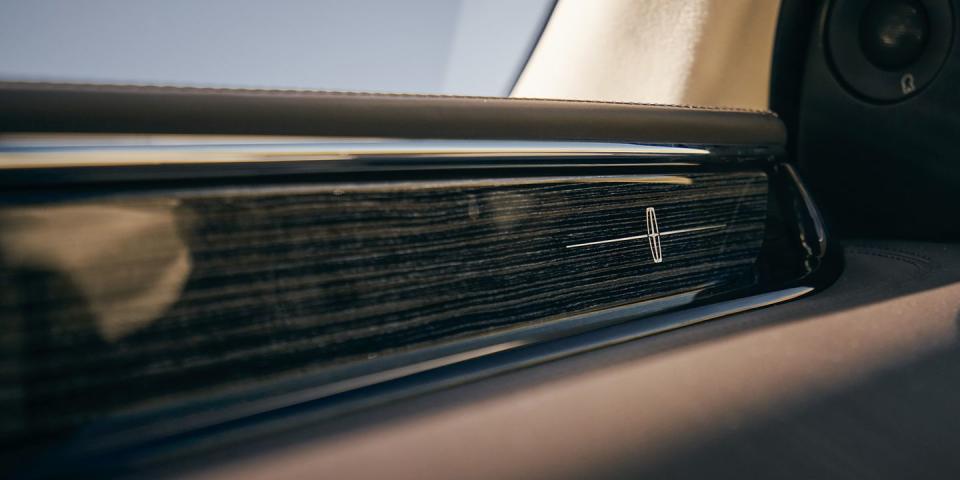
The magic is on the inside. When was the last time an American car had an interior this thoroughly designed, seemingly without regard to cost of materials or difficulty of assembly? The suicide-door ’61 Continental, maybe. The Navigator Black Label bristles with chrome, leather, exotic woods, and transparent surfaces, all of which are perfectly lit through massive side windows and a panoramic sunroof. The result is what you’d get if Frank Gehry were to redesign the Rolls-Royce Ghost with assistance from Ray Eames.
Not everything is beyond reproach-the standard-issue F-150 center-stack buttons are uncomfortable in their newly upscale surroundings. But this is, in virtually all respects, a modern expression of the no-corners-cut philosophy that guided the development of the Continental Mark II and its immediate successors. Let Rip Van Winkle fall asleep behind the wheel of a parked Lincoln in 1963, then wake him up in the Navigator Black Label. He will not be the slightest bit surprised.
Scratch that. He would be amazed by the Navigator’s dashboard and its cornucopia of fascinating graphics. The main gauges are presented as chrome-trimmed dials set in darkness and spotlit around the position of the indicator needles. Twisting the drive-mode knob results in a full-screen animation for each choice.
Over the course of 400 miles, subtle touches became apparent. The steering wheel is the best on offer here, providing a wide range of functions without distracting the driver. Adjustable seats are effectively perfect and easy to use. The driver aids are the least intrusive and most helpful, particularly the radar cruise control. The Lincoln is not as quiet as the Lexus, but it’s not far off, particularly at low speeds.
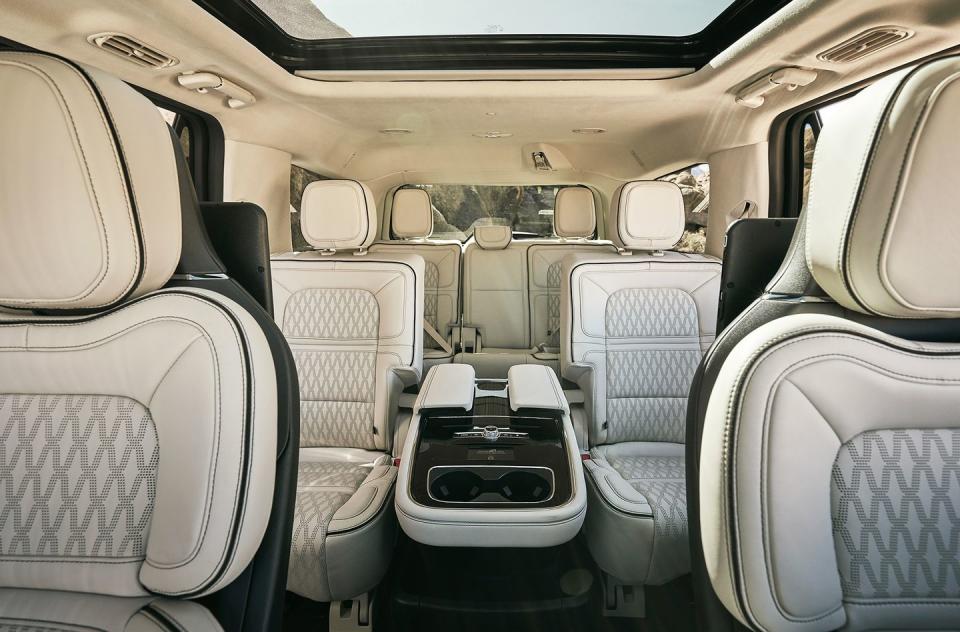
As with the LS 500, the second row is tight, although each of the two captain’s chairs has its own video screen in a floating mount on the seat ahead. The third row benefits from extra space created by the use of an independent rear suspension.
Thanks in part to that suspension, the Navigator splits the ride-quality and dynamic differences between its live-axle-equipped, full-sized-SUV competition and the top-end sedans. It accelerates with authority that nearly equals the Lexus, and it is more than capable of maintaining unreasonable speeds up and down a mountain, but it makes no pretense at sporting deportment.
Perhaps that last quality is why the Navigator is so satisfying. For the past few decades, luxury buyers have been forced to eat their sporty vegetables before they may have their luxurious desserts. We have come to associate aggressive suspension tuning and touring-car styling as inevitable consequences of a high transaction price when, in fact, they were never mandatory. This big Lincoln cuts that Gordian knot with a chrome-and-leather sword- and that alone is enough to validate its self-proclamation.
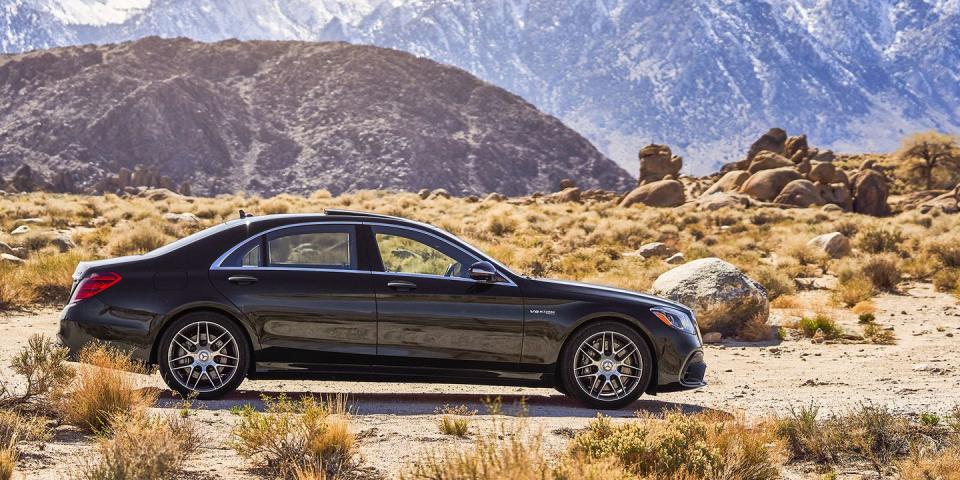
Benchmark Luxury
IT’S A GERMAN ICON TURNED GLOBAL CITIZEN, bred for the autobahn but found everywhere from Los Angeles to Lagos, beloved by owners as different as John Gotti and Johnny Cash. Most critically, the Mercedes S-Class has long been the only way to spend this kind of cash on an automobile without raising the slightest question as to your taste or sanity. Yet there are barbarians at that particular gate, and their numbers are swelling.
Which is probably why Mercedes is attempting to push those boundaries of price and taste even further. As optioned, our S63 rings the register for nearly twice the MSRP of a standard S450 sedan. The difference between this car and the outstanding base S560 is over $70,000-enough to buy a Corvette Z51, which more or less matches the AMG in a drag race. Yet it’s not hard to see where the money went. The hand-built engine, twisting the crank to the tune of 603 hp and a diesel-truck-like 664 lb-ft of torque. The outrageous interior, filled stem to stern with leather stitched on top of leather, and big, complex pieces of carbon-fiber. Forged wheels. A refrigerator in the rear console. Seats that offer multiple programs of massage and pressure relief. This is luxury with the purity of raw opium, and it can feel equally difficult to give up.
Another form of luxury, one relentlessly promoted by Mercedes-Benz, is semiautonomous driving technology. Yet the S63’s $2250 Driver Assistance package seems designed to punish more than assist. Crossing the road’s edge line, or anything that looks like it, results in a harsh brake and swerve that is guaranteed to elicit a middle finger or worse from the pickup behind you. No Elizabethan manservant ever displayed this much truculence in the performance of his duty.
As one would expect from an AMG, the power would make Lord Acton reach for an airsickness bag, and it gives no sense of abating until the speedometer is buried deep in the area marked “felonious.” On a fast two-lane back road, it matches the Lexus for midcorner speed, and obliterates it accelerating and slowing down. Left-lane dawdlers who register neither the Lincoln’s bulk nor the cruel alien visage of the Lexus exhibit a knee-jerk willingness to yield to the three-pointed star approaching at warp speed in their mirrors.
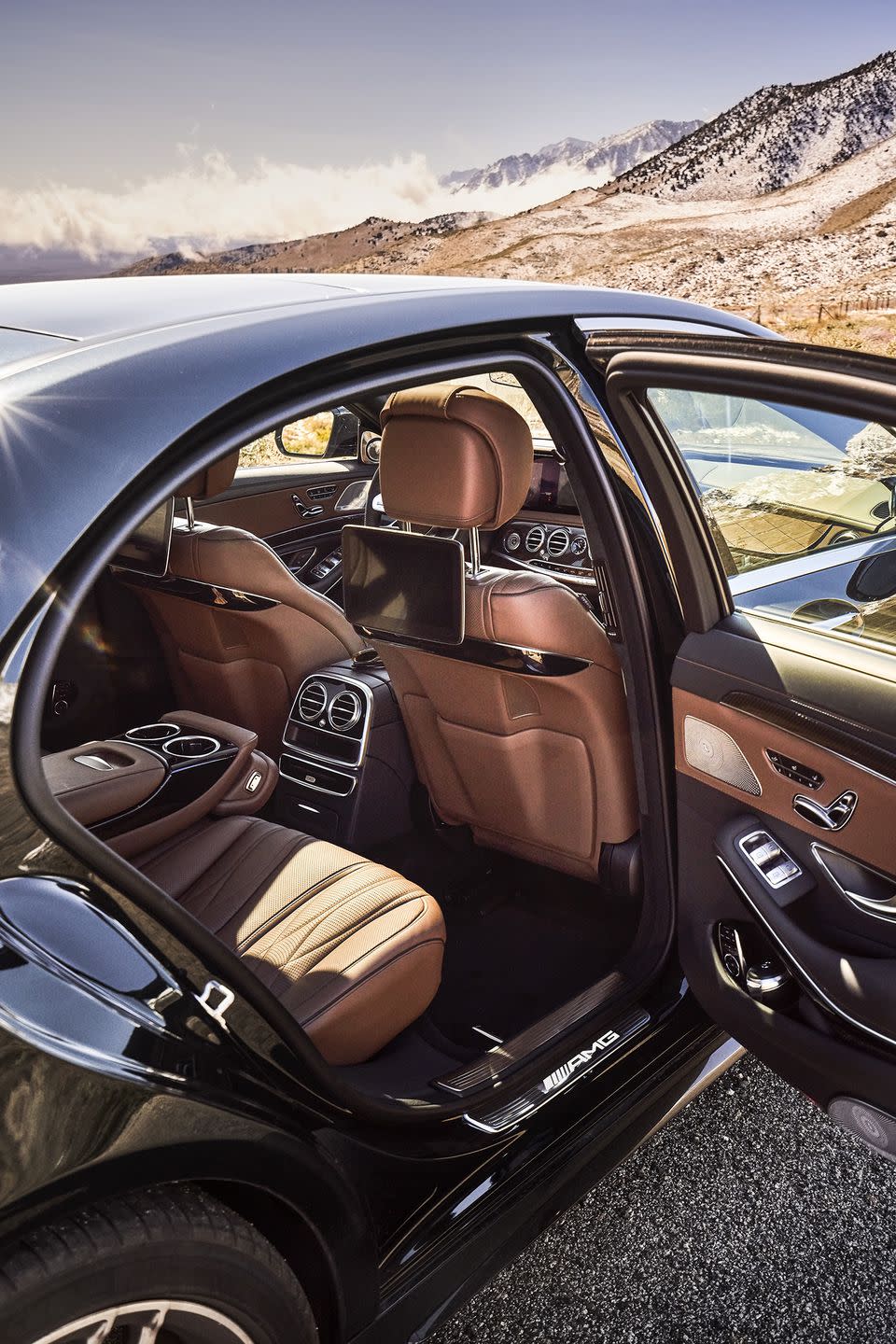
For comfort and coddling, the Lincoln might have the best driver’s seat, but passengers will universally prefer the rear accommodations of the S63. It’s spacious and long-haul comfortable, boasting a variety of first-class touches, including pillows that attach to the adjustable headrests. Very Emirates A380 business class, which is surely no accident.
Mercedes has discerned that there’s money to be made in upscale variants, which is why even more expensive S65 AMG and Mercedes-Maybach models join the S63 in the showroom. It’s a testament to the luxury status of the S-class that, even equipped to nearly $180,000, the S63 feels like a value. Part of the car’s charm has always been its ability to transcend the tastes of its owners. It bears the disparate indignities of quilted-ostrich-interior gullwing conversions and no-options-selected, black-over-tan configuration with equal grace and felicity.
Yet the S63-delightful as it may be-just whets our appetite for the old-money luxury of a standard S-class. Even the entry-level S450 has that superbly spacious cabin with its Focke-Wulf wraparound visibility, the absolutely stress-free absorption of everything from freeway to back alley, and the knowledge that you have chosen one of the safest vehicles in history. To pile onto that, as the S63 does, is to tread the awkward middle ground between techno tour de force and wretched excess.
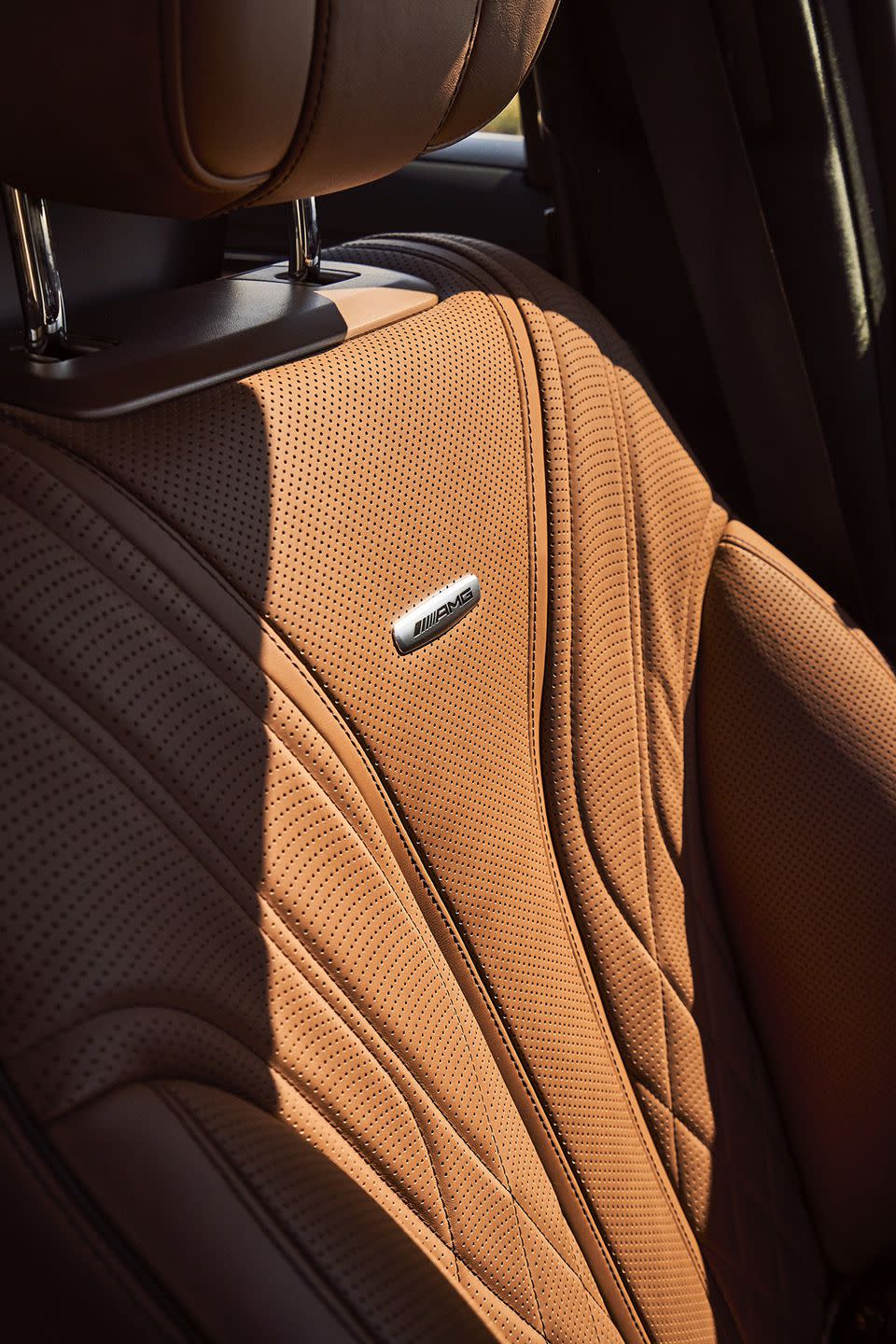
JUSTICE POTTER’S DECISION to draw a tolerant distinction between the prurient and the genuinely obscene opened the flood-gates to massive and permanent changes in popular culture. Similarly, a seismic shift in our definition of “luxury car” has allowed everything from truck-based SUVs to electric hatchbacks to fight for a share of the upscale pie, in some cases to the detriment of the luxury sedan’s popularity. Yet most, if not all, of the core requirements remain the same, regardless of packaging.
The luxury car of tomorrow will still need to provide first-class accommodations for at least four people. It will still need the ability to isolate the driver from the madding crowd, through insulation against noise, vibration, and harshness, and via the opportune application of superior horsepower. It will need to be a little bigger, brasher, and more beautiful than the everyday vehicles around it. Most of all, however, it needs to convey a sense of occasion. Ask anybody who has owned an old Mercedes 560SEL for a long time, and they will tell you that the car never stops impressing its occupants. That, in a nutshell, is the difference between the truly luxurious and the merely costly.
Measured against those criteria, each of these cars is an unqualified success. It’s not that surprising, really. We know what a luxury car is when we see it, and to our eyes the LS 500, Navigator, and S63 all fit the description. As with so many other aspects of modern life, however, we are now forced to look a little further and see just a little more. So while the traditional luxury sedan remains without peer, it must now face something it has never truly experienced: competition.
('You Might Also Like',)

